I have a really great solution for cutting back on electricity bills during the summer that, with a million reservations, I am going to go ahead and share.
Quick segue: I usually try to make the photos on this blog look as pretty as possible. I play with the lighting, pick up toys, dust a little bit and things like that. When I started taking photos for this project, I was like, “Oh . . . this looks bad.” And then I asked for Mr. L’s opinion and he said this–and I’m going to caption it because his comment was very clever:

It’s true. But I’m going to ignore his advice and just show you what I did. Because it’s a good idea. And it really does work. And unless you post it on the internet (ha), nobody has to know.
BAM

BOOM
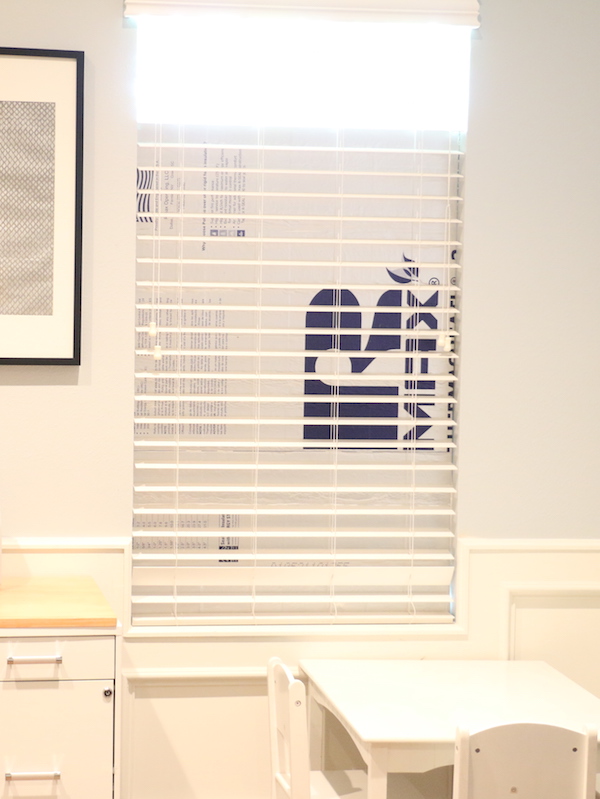
Done.
Now that you’ve seen it, I’ll to rewind a little bit and explain.
This is our playroom:

It’s not a showroom or anything, but those drawers and cabinets hold some pretty valuable equipment–trains, automobiles, and CAT construction vehicles. Lamborghini would be in there 24/7 if we didn’t pry him away from his toys every day. The problem with the playroom, however, is that it’s upstairs.
Here’s why that is a problem: Our house was built in the 1980s, and the windows are original to the house. The windows are single-paned glass, and each window is comprised of 15 individual panes. That basically means that there are 38 joints in which hot air leaks through like the pink slime in Ghostbusters 2. Then the heat rises. As soon as summer temperatures hit in early May, the upstairs AC runs all of the time, and the playroom never cools off.
I knew I had to come up with a solution to make the upstairs bearable during the summer (and to save money!). My first thought was black-out curtains. However, even if you make them yourself, they can be quite pricey. Part of me also feels that because curtains are not flush with the window, they don’t do a great job keeping out the heat. Doesn’t the heat just go around the 2-inch space between the window and the curtains? Just a thought . . . .
My mom actually suggested the foam panelboard idea. She had used it during the winter to insulate her 1950s sliding glass doors in a room in the back of the house.
And at $20 for a four-foot by eight-foot panel, it is much less expensive than making black-out curtains. And a lot easier too!
Here’s what I did:
This is an incredibly fast and simple process. The toughest part is transporting the panel board home. However, it’s so easy to cut the board, that you could probably do this entire process in the parking lot if you have a smaller car. I laid mine out on the floor in the playroom.
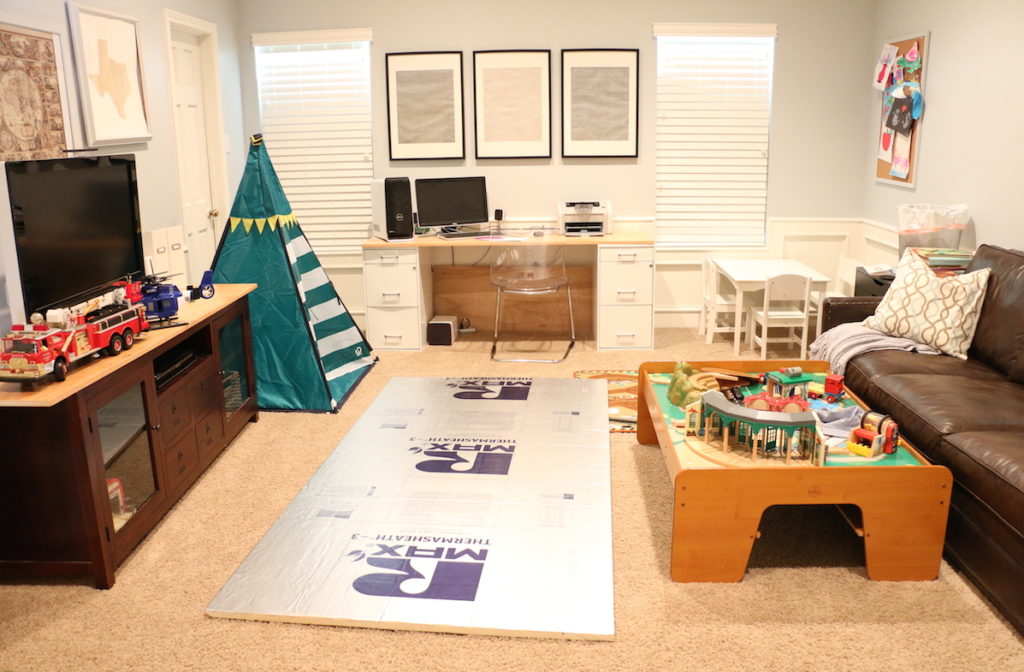
I opted for this 1 inch thick foam insulation board from the Home Depot because it doesn’t break as easily as the thinner options. Plus, more foam means more insulation.
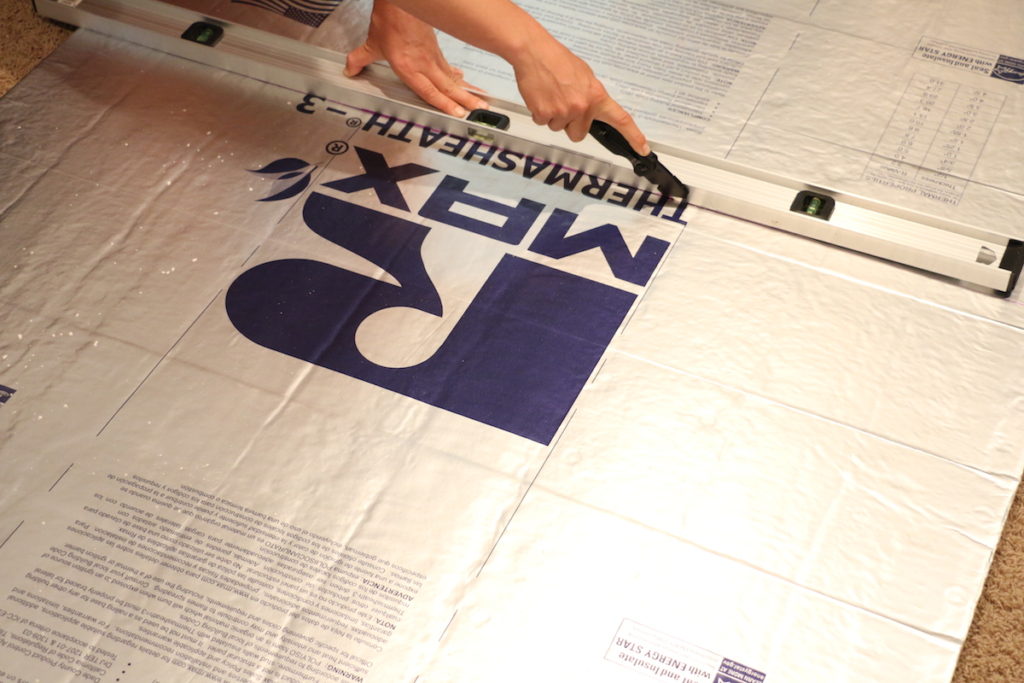
I used a permanent marker and a straight edge to mark the foam board with my window dimensions. Then I used a utility knife (I highly recommend this one) to score the foam on one side. After scoring it, you can apply a little pressure to the board, and it will break down the line.
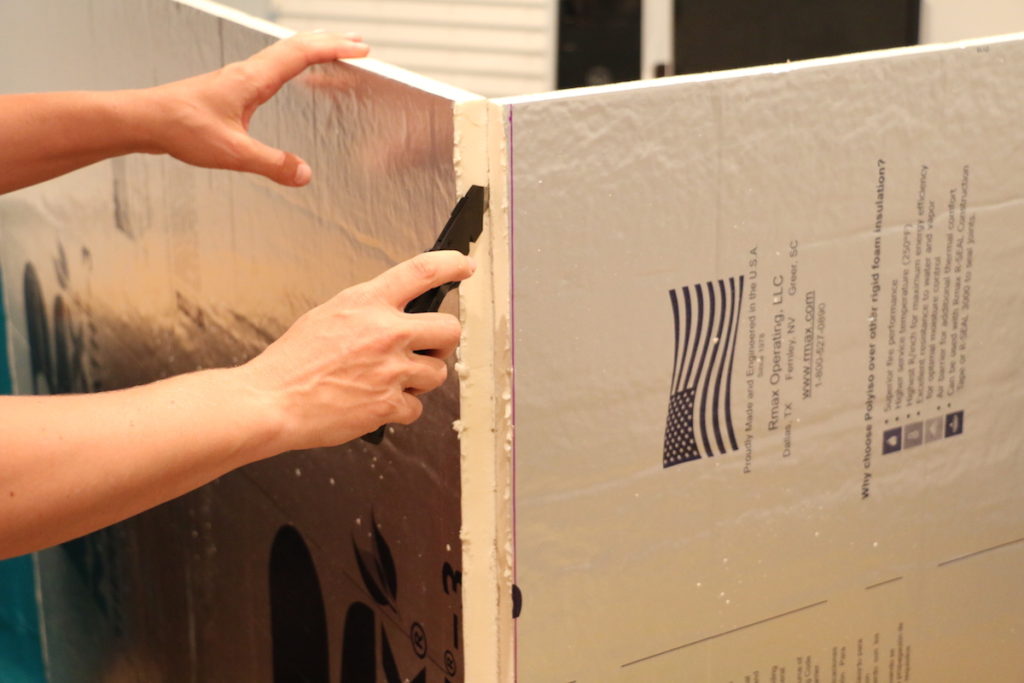
At this point, you can just run the the utility knife down the break and separate out the piece you need. If you measured and cut correctly, the piece should fit snugly into your window.
In the game room, I opted to put my foam board pieces behind the blinds with the blank side facing out. Our game room faces our backyard, and those are the only windows on the second floor on that side of the house. From the outside, the board just looks like white curtains behind the windows.
If I were going to put the board up on the front side of the house, I would have put the foam board on the other side of the blinds.
Let me explain. I can’t believe I’m going to show you this, but I went a little insulation crazy and did this to our infrequently used guest room as well. See below.
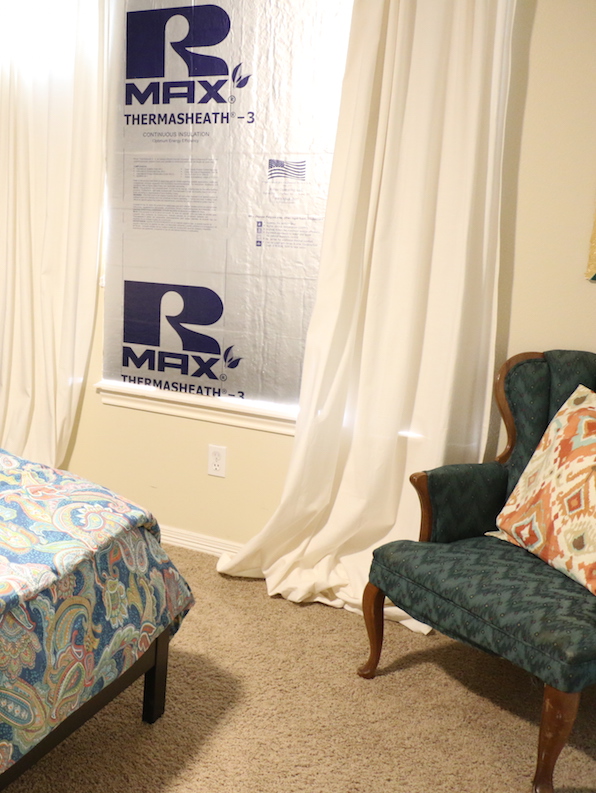
If I hadn’t posted this, nobody would have known it was there because I take the panels down when guests use the room and close the curtains when people come over. From the front of the house, the windows are all uniform because you can see the wood blinds from the front.
Not the most beautiful look when the curtains are open, but it keeps electricity costs down. And it keeps us cool!


Leave a Reply